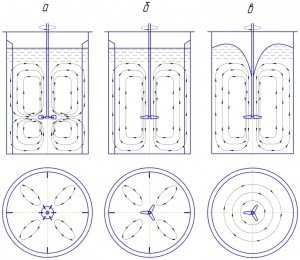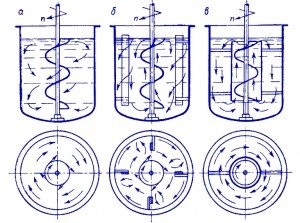Theme of master's work:
"RESEARCH OF COMPONENTS STIRRING PROCESS'S EFFICIENCY WITH THE PURPOSE TO DECREASE
THE LEVEL OF ENERGY CONSUMPTION AND INTENSIFICATION OF THERMO- AND MASS-TRANSFER"
Scientific advisor: Greedin Sergey Vasilievich
ACTUALITY OF THEME
Food retail industry is large, constantly developing industry with the high level of energy consumption. Specific
production energy spending for food products in Ukraine are 2-4 times higher as much as average energy expenditures
in Europe and 3-6 times higher than in high-developed European countries: Germany and France. Therefore, mainly,
food products, made in Ukraine, are uncompetitive within the World market. If not to undertake urgent measures
the products of the Ukrainian food producers will be forced out from domestic market too.
At the same time, these are products of agricultural sector that are capable to fill the state budget quickly,
as there is permanent demand and domestic technologies and raw material usually guarantee high food qualities
of manufactured products. So the purpose of power manager engaged at a food enterprise is to search economic
advantageous from technical and structural points of view for working out technical decisions for decreasing
power resources expenses.
One of directions for solving of energy saving problem is a competent organizing of technological production
processes at a food enterprise: substituting of equipment by modern one having less specific energy consumption,
the usage of second hand power resources in the process of production. However, energy management should c0onstantly
take into consideration such economic constituent as rationality of the inculcated measures from point of enterprise
financial possibilities to aspire to achievement of optimum between the cost of measure and energy saving efficiency as itself.
EXPERIMENTAL PART CONTENT
Actually, all food retail industry enterprises use the process of components stirring. Stirring is the method for
getting homogeneous mixtures and also for intensification of thermo- and mass-transfer in some chemical devices.
Interfusion is made mainly in large tanks with mixing devices (usually by mixers).
This process consists in distributing of dissolved matters, self-weighted particles and warmth, and also in dispersing
of drops and bubbles in liquid with moving them by force. Thus there is a circulation flow of liquid on circumferential
and (or) meridian direction, accompanied with the appearance of shift tensions. Character and intensity of stirring
depend on mixers constructions. The basic types of mixers and directions of streams are shown below.
Mixers are divided into high-speed and slow ones.
To high-speed mixers belong propeller, turbine, disk and blade mixers. Depending on form of blades and method of their setting these mixers can produce radial, axial and radial-axial streams of liquid.
 Chart of work of turbine and propeller high-speed mixers:
Chart of work of turbine and propeller high-speed mixers:
a) – turbine mixer, tank with partitions;
b) – propeller mixer, tank with partitions;
c) - turbine or propeller, tank without partitions.
Blade, anchor and frame mixers belong to slow mixers. They produce circuitous stream of liquid mainly, I.e. liquid
is rotating around the device axle. Screw and band mixers also belong to this group.
 Fig.2. Examples of different variants of setting of screw mixers:
Fig.2. Examples of different variants of setting of screw mixers:
a) tank without partitions;
b) tank with partitions;
c) mixer with diffuser and tank without partitions.
There are the special constructions of mixers, for example mixers, creating large shift tensions, (actually these are
some types of turbine mixers), oscillation, scraper mixers et cetera.
The stirring process itself takes much of electric energy mainly because of mixer driving unit consumption. At the same
time mixer rotation speed depends on stirred matter viscidity. Usually stirring process is accompanied with heating of
mixture due to heat from a thermal shirt which is situated round tank containing mixtureâ matter. Intensity and evenness
of process of heat exchange depends on the form of mixer, its speed of rotation, and from viscidity of the mixed material.
Thereby the primary purpose of the research part of Master's Degree Work is estimating of correlation between all
above-mentioned parameters and designing of mathematical model of stirring process.
This model should allow to calculate optimum speed of mixer rotation minding actual mixed matter viscidity and according
to that the consumption of electric energy, and also to determine the parameters of the proper thermal mode.
PURPOSES OF MASTER'S DEGREE WORK
The performed research allows to choose the special mixing equipment for every food product and it will provide the
advantageous
 combination of technological parameters with the minimum expenses of thermal and electric energy and optimum
cost of equipment. Besides, the structural analysis of all technological processes at an inspected food enterprise will help
to estimate its energy-saving potential and design the economic based program for energy saving measures.
combination of technological parameters with the minimum expenses of thermal and electric energy and optimum
cost of equipment. Besides, the structural analysis of all technological processes at an inspected food enterprise will help
to estimate its energy-saving potential and design the economic based program for energy saving measures.
© DonNTU 2009 Yarunicheva D.
Author's abstract Biography